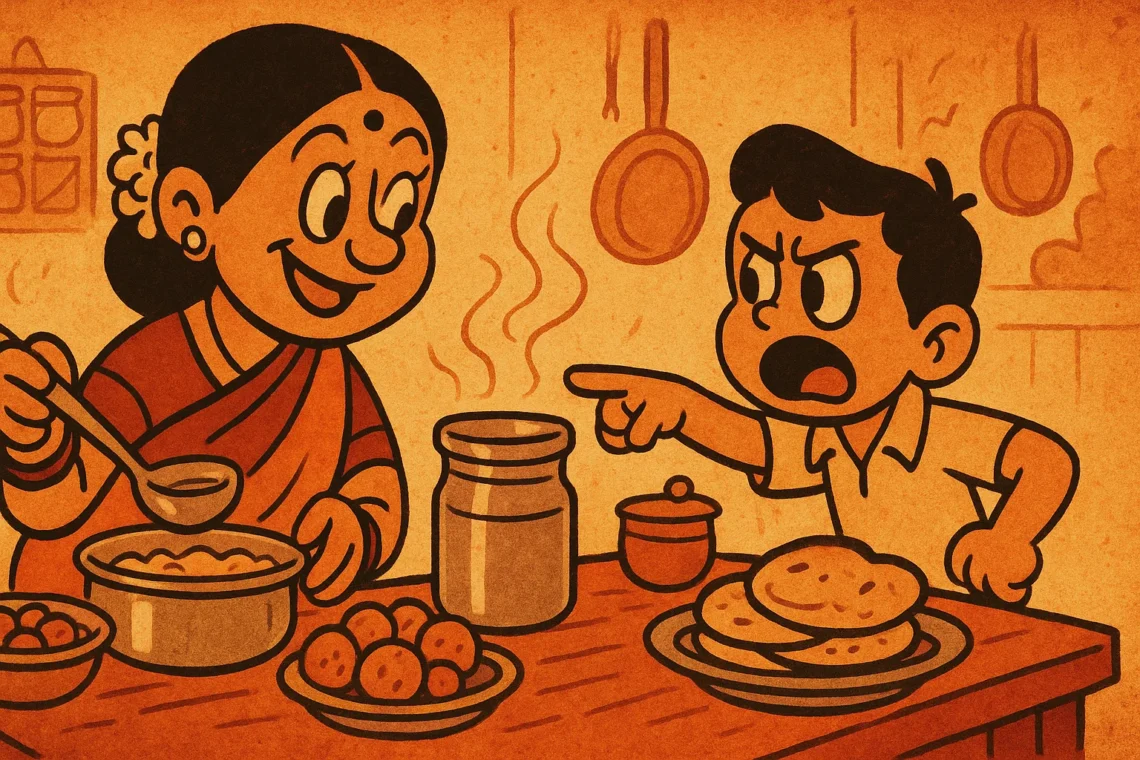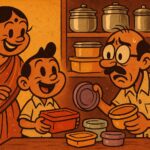I knew something was wrong the moment I opened the kitchen drawer and saw it — a bright turquoise plastic container, suspiciously shiny, suspiciously new. Gone was the old steel dabba that had lived there for as long as I could remember, the one with dents like fingerprints and a lid that creaked in protest. In its place sat this feather-light, airtight, microwave-safe imposter. And for reasons that didn’t make sense at the time, I got mad. Really mad.
My mom, unbothered, was busy wiping down the counter. “I got a set,” she said. “Buy one, get two free. See — it even has a pour spout.” She opened the lid like a game show host revealing a grand prize. I blinked. Inside were the same roasted peanuts she always kept. But they didn’t smell the same. They didn’t sound the same when I reached in. They didn’t feel like home.
It Wasn’t About the Container
Of course, it wasn’t about plastic. It was about change. About memory. About the quiet objects that stitch a home together and how quickly that stitch can feel loose. That old steel dabba had been a fixture — passed from shelf to table to tiffin bag and back. It had stored everything from murmura to barfi to my childhood 4 PM snack: roasted makhana with a pinch of salt and turmeric. You could tap it and know how full it was. You could smell the ghee even with the lid on. And when the monsoon hit, it was always wrapped in old newspaper to keep the damp away — part container, part ritual.
The new plastic one? It didn’t hold any of that. It was slick and cold and entirely emotionless. A kitchen item with no memory, no backstory. And in that moment, I realized: I wasn’t upset because it was new. I was upset because it wasn’t ours — not yet.
Modernity, Efficiency, and the Cost of Convenience
“I can see what’s inside without opening it!” my mom said, as if that were a breakthrough. “It won’t rust. And it’s lighter. Easy for me.” She wasn’t wrong. It was easier. The lid sealed tight with a soft click instead of needing three tries and a twist. It stacked better. It looked neater. But it didn’t make that satisfying clang when placed on the table. It didn’t feel like part of our kitchen.
That weekend, she replaced three more containers. Tea leaves, sugar, chana dal — all now sitting in cheery, pastel plastic, smiling smugly from their new corner. I sulked like a child denied dessert. “What’s next, microwaveable steel tumblers?” I muttered.
The Real Reason I Was Upset
It took me a while — and a long walk — to understand why I cared so much. It wasn’t about the material. It was about the meaning. That steel dabba had traveled with us across apartments, cities, family dramas, exam weeks, and summer holidays. It was always there. In a world that changed constantly — jobs, schools, hairstyles, opinions — that container was a constant. And now it was gone, without warning, replaced by something more “efficient.” I wasn’t mad at the plastic. I was grieving the end of an era.
Slowly, the Plastic Got Familiar
Over time, something shifted. Not all at once. But slowly, the plastic dabba became… tolerable. Then familiar. It began to collect its own scratches. Its own smells. One day, I opened it and the peanuts inside smelled exactly like the ones from the old dabba. My mom had roasted them the same way, in the same old kadhai, with the same flick of salt and ajwain. Turns out, memory doesn’t live in steel. It lives in the hands that cook, the spices that stick to the lid, the gestures repeated every day.
Eventually, I stopped noticing the new containers. Until one day, while packing my bag for my flight back to Austin, my mom tucked one into my suitcase. “Here,” she said. “For your kitchen.” It was the same turquoise plastic. Filled with roasted peanuts. The lid clicked shut. The smell made me tear up a little.
Change Is Hard. Food Helps.
We like to believe that home is a fixed idea — a set of objects, rituals, recipes. But home evolves. It gets lighter, tighter-lidded, BPA-free. And sometimes it makes you mad. But eventually, it teaches you that care doesn’t come in a particular shape. It just keeps showing up — in dabbas new or old, as long as the contents come with love.
Now, in my own kitchen, I have both: a steel container for tea leaves, and my mom’s plastic one for peanuts. When I open it, it smells just right. I don’t love the look of it. But I love what’s inside.
Born in Mumbai, now stir-frying feelings in Texas. Writes about food, memory, and the messy magic in between — mostly to stay hungry, sometimes just to stay sane.












